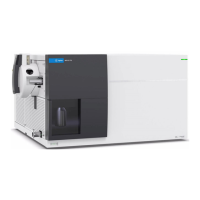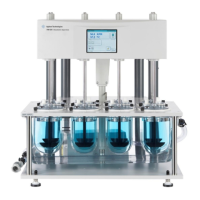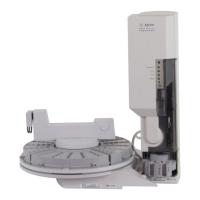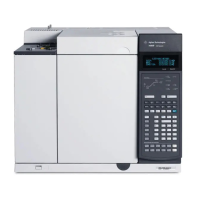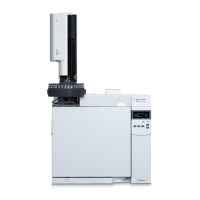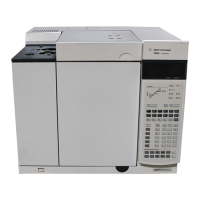78 Troubleshooting and Maintenance Manual
4 General Maintenance
The GC inlets and GC oven also operate at very high temperatures. Use the
same caution around these parts. See the documentation supplied with your
GC for more information.
Chemical residue
Only a small portion of your sample is ionized by the ion source. The majority
of any sample passes through the ion source without being ionized. It is
pumped away by the vacuum system. As a result, the exhaust from the foreline
pump will contain traces of the carrier gas and your samples. Exhaust from
the foreline pump also contains tiny droplets of foreline pump oil.
An oil trap is supplied with the foreline pump. This trap stops only pump oil
droplets. It does not trap any other chemicals. If you are using toxic solvents
or analyzing toxic chemicals, do not use this oil trap. For all foreline pumps,
install a hose to take the exhaust from the foreline pump outdoors or into a
fume hood vented to the outdoors. For the foreline pump, this requires
removing the oil trap. Be sure to comply with your local air quality
regulations.
Never touch these parts while your MS is on. After the MS is turned off, give these
parts enough time to cool before handling them.
The GC/MS interface heater is powered by a heated zone on the GC. The interface
heater can be on, and at a dangerously high temperature, even though the MS is off.
The GC/MS interface is well insulated. Even after it is turned off, it cools very
slowly.
The foreline pump can cause burns if touched when operating. An optional safety
shield will prevent you from touching it.
The oil trap supplied with the foreline pump stops only foreline pump oil. It does not
trap or filter out toxic chemicals. If you are using toxic solvents or analyzing toxic
chemicals, remove the oil trap.

